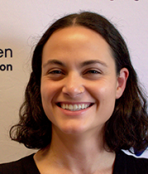A Hierarchical priority-based Control of Signalized Intersections in Semi-Connected Corridors
PI: Ali Hajbabaie (WSU), ali.hajbabaie@wsu.edu, ORCID: 0000-0001-6757-1981
Co PIs: Sameh Sorour (UI), Ahmed Abdel-Rahim (UI)
AMOUNT & MATCH: $180,000 from PacTrans; $180,000 Match
PERFORMANCE PERIOD: 8/16/2018 – 8/15/2020
STATUS: Completed
CATEGORIES: Signal Control, Connected Vehicles, Emerging Technology
DESCRIPTION: The main objective of this research is to develop efficient distributed yet coordinated algorithms to control signalized intersections in connected and semi-connected (when not all vehicles have connectivity capability or refrain from sharing intentions for privacy reasons) corridors. The research will enhance traffic signal optimization formulations to allow for the incorporation of connected vehicles and existing point detector data in the models, the distribution of decisions at both the intersection and the corridor levels to reduce computational complexity, and the coordination of control decisions among various intersections by a distributed cloud-fog based communication network to push solutions towards global optimality.
The research will address computation and communication needs required to implement the proposed optimization system in the field by developing, testing, and validating a hierarchical cloud-fog architecture. We utilize a hierarchical priority-based control using fog-cloud architecture to achieve this objective. The fog component will consist of micro-datacenters with limited computational capabilities collocated with the Road-Side Units (RSUs), responsible for computing optimal timings of traffic signals in real-time utilizing their limited capabilities. A cloud backbone will be connected to all fog components of the city or each city zone to exchange information among the neighboring fog components to enable coordinated yet distributed optimization of traffic signal timings. It can also perform analytics on the collected data and decisions from all fog components to learn spatio-temporal patterns, especially in the case of semi-connected scenarios. The proposed architecture allows intersection- and corridor-level optimization algorithms to be performed and control decisions to be communicated to traffic signal system using existing control hardware and communication technology.
| DELIVERABLE | DUE DATE | DATE RECEIVED |
| Research Project Progress Report #1 | 4/10/2019 | 4/10/2019 |
| Research Project Progress Report #2 | 10/10/2019 | 10/9/2019 |
| Research Project Progress Report #3 | 4/10/2020 | 4/10/2020 |
| No Cost Extension Request | 6/15/2020 | 7/7/2020 |
| Draft Report | 12/15/2020 | 4/15/2021 |
| Final Project Report | 2/15/2021 | 5/14/2021 |


